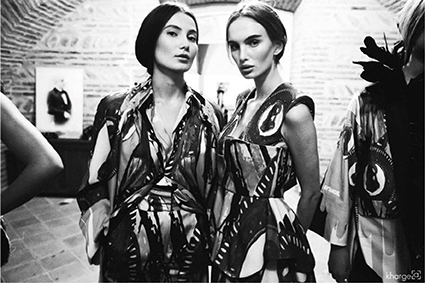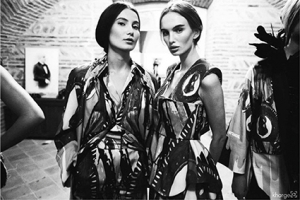Fashion Tourism – the Next Big Industry Trend?
Tea Agladze, the editor-in-chief of fashion and lifestyle magazine Bomondi, proclaims that fashion tours of Georgia are the next big trend in the tourism industry.
As head of the popular magazine, Agladze is a both a trend forecaster and an arbiter of taste. This past Friday, Agladze spoke on the subject, saying “Tourist companies bring people interested in fashion to our country, who not only taste our wine, dishes and do sightseeing, they learn about the country’s fashion industry. A lot of people are interested in successful and amateur designers of Georgia. That’s why tours are planned with the involvement of all interesting designers. This direction helps them release their products, increases demand, promotes penetration on markets abroad and in addition promotes tourism in country.”
Fashion is no longer simply an entertainment industry but plays a significant role in the growth of the Georgian economy. Many people have become familiar with the country through its fashion industry and superstar designers such as Demna Gvasalia, the creative director of Balenciaga and head designer for Vetements. Gvasalia brought the post-Soviet aesthetic to the world stage and turned heads with his Georgian 90s-inspired collections. Even after proclaiming, in 2017, that “Eastern Europe is over,” young Georgians still flock to the bazaars to buy knock-offs of his designs – and the occasional authentic piece. In May, GQ wrote about the future of fashion and Georgia’s role in it in an article on their website, calling Georgia “the wildest country in fashion.” The piece highlighted six up-and-coming designers who showed collections in Florence earlier this month at the bi-annual Pitti Uomo, (in English, "Pitti Men"), one of the world’s most important platforms for men’s clothing and accessory collections, and for launching new projects in men’s fashion. Pitti Uomo is described by GQ as “typically known for generating insane, eyeball-twitching street style.” Each year, Pitti Uomo hosts selected designers, and this time Georgia was in the spotlight as the guest nation.
Big Georgian brands have received international success, such as Avtandil, worn by Lady Gaga and Mary J. Blige, Situationist, worn by Bella Hadid, and George Keburia, worn by Rihanna and Kortney Kardashian. Beyond the reach of most average Georgians, the high-end fashion from local designers inspires street wear lookalikes and draws culturally curious fashionistas to the boutiques and workrooms of Georgia’s top fashion houses.
Fast fashion has also had an impact on the Georgian economy. In April of this year it was announced that a textile factory would begin operations in Kutaisi, manufacturing clothing for brands H&M, Mango, Zara, Coast, Colveta, United Colors of Benetton, and Oasis. The company is expected to start with 250 employees, eventually expanding to 350, and to see an annual turnover of 3.3 mil GEL ($1.3 mil), according to a statement released by parent company MGMTex.
In a 2016 op-ed in The Financial, economist Tamta Maridashvili predicted Georgia’s participation in textile manufacturing will follow Turkey’s arc. “From an economic perspective, having a strong textile industry is a double-edged sword,” she writes, “due to its heavy dependency on low labor cost, particularly when it comes to the most labor-intensive CMT activities (cut, make and trim). A country will have a textile industry only so long as it offers the cheapest labor. Once economic development sets in, textile producers will be the first to leave.” From 2000-2010, Turkey had a very strong apparel and textile industry, making up a significant portion of the economy. In 2009, 56,000 apparel and textile companies operated in the country, employing approximately two million people, and 18.69% of Turkey's total exports were in the sector. The boom did not last long, however. From 2009-2013, “Turkish salaries almost doubled, leading to the country’s loss of its cost advantage” and its “creeping demise,” writes Mariamidze. She explains that as Turkey lost its cost advantage, Georgia, particularly the Adjara region, “became the natural destination of the wandering textile industry...starting in the mid-2000s.” By 2015, Turkey’s textile and apparel industry had essentially evaporated. Mariamidze warns, though, that Georgia’s new economic sector will not last forever, as wages will inevitably rise, pricing itself out of the sensitive industry. She recommends Georgia follow Turkey’s trajectory, “Rather than wait for the CMT industry to move on (or become robotized), the Georgian government could use the current momentum to launch a “Designed in Georgia” branding campaign and in this way channel Georgians’ innate creativity into the lucrative fashion design and clothing industry.”
A linkage to Georgian design could, of course, be fashion tourism, bringing together two of Georgia’s most popular concepts. Agladze says that fashion tours are currently being developed, and while it is an as-of-yet unexplored direction for both Georgia’s tourism and fashion industries, with a strong marketing campaign, she predicts long term success.
By Samantha Guthrie











